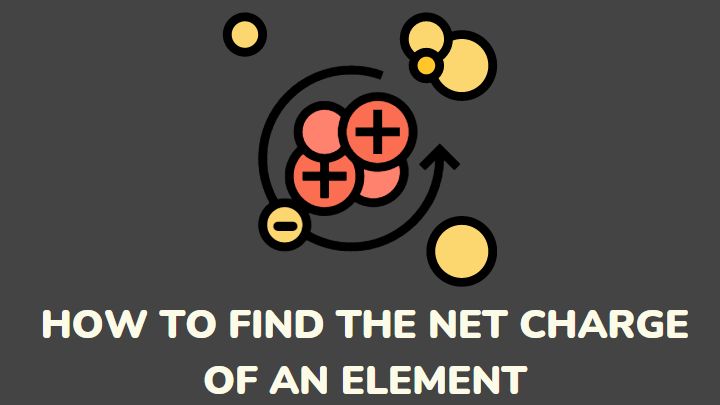The net charge of an element is the difference between the total positive and negative charges on an atom. Naturally, atoms in their uncharged state have a zero net charge. This is because a neutral atom contains an equal number of electrons and protons.
Atoms become cations and anions when they lose or gain electrons. When either of these happens, the number of electrons becomes less or more than the number of protons. That is, the positive charge becomes more than the negative charge.
The difference is what is known as the net charge of an element.
In this article, I’ll discuss how to find the net charge of an element. This article also details the difference between charge and oxidation states, valency, and formal charge.
How to find the net charge of an element
The net charge of an element is defined as the difference between the total number of protons and the total number of electrons in an atom.
For example,
An atom with:
- 32 protons and 32 electrons
- 32 – 32 = 0
- 32 protons and 30 electrons
- 32 – 30 = +2
- 32 protons and 34 electrons
- 34 – 32 = -2
Is the net charge of an element the same as the oxidation number?
Yes, the charge is the same as the oxidation number for monoatomic atoms.
The difference between these two is that some elements have varying edition numbers depending on the number of electrons lost or gained. On the other hand, the charge is obtained from the difference between the total number of protons and electrons.
However, in polyatomic atoms, the net charge is the sum of the oxidation numbers of all atoms.
Is the net charge of an element the same as the valency?
No, the charge of an element is not the same as its valency.
The valency of an element refers to the combining power of the element. It measures the reactivity of elements. Valency is usually the same across a group. For instance, the valency of all elements in group 1 is 1 and the valency of the elements in group 2 is 2.
On the other hand, the charge describes the reaction the element has undergone. It refers to the number of electrons gained or lost.
Additionally, in comparison with oxidation states, valency is not always the same as the oxidation number, but the charge is always one of the various oxidation states.
Is net charge the same as formal charge?
No, it is not. The net charge of a molecule or ion is the sum of all formal charges on the molecule or ion. Formal charge, on the other hand, is the charge on the individual atoms in a polyatomic
FAQs
Are there elements on the periodic table that have a neutral charge?
All elements of the periodic table are neutral before they gain or lose electrons. However, the noble gases – helium, argon, neon, krypton, xenon, radon, and oganesson – do not form cations or anions.
Which elements of the periodic table are cations?
Elements in groups 1A and 2A of the periodic table form cations. Transition metals, basic metals, and metalloids also form cations. These elements gain electrons and develop a positive charge.
Which elements of the periodic table are anions?
The elements on the right side of the periodic table – the nonmetals and halogens – form anions. Examples of some are fluorine, oxygen, sulfur, and chlorine.
Moreover, some other elements of the periodic table can form both anions and cations. These elements are called metalloids. Examples include selenium, silicon, arsenic, and bismuth.
Conclusion
When an atom gains or loses electrons, the number of protons becomes more or less than the number of electrons. This difference makes the net charge.
Net charge, valency, and oxidation states are similar but different terms that describe the reactivity of elements and the reaction atoms have undergone. For elements like sodium and oxygen, the net charge is the same as the valency and oxidation states.
On the other hand, it could be different for elements like nitrogen, copper, and cobalt which have more than one oxidation state.
You should also learn how to find the formal charge of an atom.
Thanks for reading.
